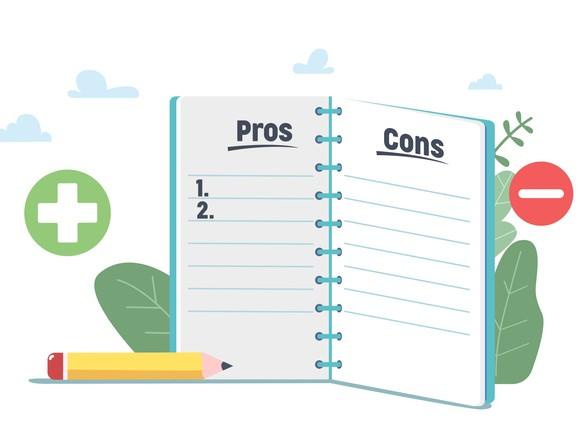I’ve sat through countless presentations about how and under what conditions faculty are likely to adopt new edtech products for their courses. At some point in the presentation the infamous edtech adoption curve is displayed.
The edtech adoption curve resembles a classic bell curve, where the number of innovators and early adopters is small (16 per cent), the majority are followers in the middle (68 per cent) with, finally, another small group, referred to as “laggards”, who resist change (16 per cent). But it’s important to note that the curve was adapted to education from a 1962 theory of how innovation spreads within systems generally, with the aim of understanding how new products spread among faculty.
Are there really such a small number of innovators and early adopters of edtech among faculty? And is this model helpful to promote edtech adoption? As the statistician George E P Box said: “All models are wrong, but some are useful” – and this is true of the edtech adoption curve, too.
- Playing to our strengths: how HE can benefit from shared edtech
- The metaverse is much more than a virtual copy of your campus
- Chasing unicorns: can universities shape the edtech space to their advantage?
In a just-published multi-institutional survey of 400-plus faculty from the College Innovation Network at WGU Labs, we show that it may be time to rethink the edtech adoption curve. Why? Because our data indicate that there are nearly three times as many innovators and early adopters among faculty than the original models suggest. We found that 41 per cent of faculty identified as “leaders” or early adopters, 48 per cent of faculty identified as “followers” after seeing other faculty use a product, and only 11 per cent identified as “resisters” who were uninterested in trying new tech.
On one hand, this isn’t very surprising – even if there were some truth to the edtech adoption curve in the 1960s, edtech, and education itself, has changed significantly since then. Edtech is not new, but its ubiquitous integration with education is. Even for in-person traditional lecture courses, students still engage with edtech such as a learning management system (LMS), clicker technology for live class polling and endless tech tools for learning and studying.
Given this new technology-enabled education environment, it seems that many more faculty are enthusiastic about adopting new edtech in their classes than previously assumed.
Perpetuating false narratives hurts not only faculty but also students
I would say the edtech adoption curve needs revising (and continued research to build a more accurate 21st-century model). It perpetuates a false stereotype that faculty are resistant to tech and change in general when our report, in fact, shows that the majority of faculty – 85 per cent − feel confident about using it in their courses.
The false narrative of faculty resistance can fuel tension between faculty and administrators driving the digital transformation on campuses today. It can also lead to faculty being left without a seat at the table when leaders are making decisions about courses and new technology on campus.
The question now is whether the insights from our report are useful to promote positive institutional change. I’d emphatically argue that they are.
We know that faculty are exhausted after more than two years of pandemic disruption in their classrooms. The pandemic revealed the limitations of our institutional systems to properly support faculty in their adoption and use of edtech to support student learning. And the lack of support is not a small problem. In our survey, 30 per cent of faculty report that they don’t have enough time to learn how to use new edtech for their courses, 34 per cent of faculty report not having the time to properly evaluate new edtech, and 15 per cent of faculty report not receiving adequate training on new edtech tools.
Putting this all together suggests that faculty interest and motivation to use edtech in their courses is not the core friction point; rather, the broader institutional systems are. Faculty are stretched thin across teaching, service and research obligations, and may, part-time faculty especially, have other full-time careers.
Empowering faculty to drive the digital transformation in their classrooms
As universities shift towards increasing hybrid and multi-modal offerings, ensuring that faculty are empowered, not inhibited, from fully using technology in their courses is paramount. Based on our data, I suggest three actionable strategies that institutions can adopt to ensure faculty are supported.
1. Field the faculty voice for edtech
Faculty know what they need on the technology front to best support their students’ learning. It’s the responsibility of administration to ensure they are talking directly and consistently with faculty to learn about their tech needs and delivering on them. Doing this can increase trust between faculty and administration and ensure that the tech that comes on campus is used and implemented.
2. Create a culture of peer learning among faculty
Our survey shows that faculty report learning about edtech from other faculty, and nearly half of faculty prefer to see another use case before adopting a new product. These data point to the need to create strong cultures of faculty peer-to-peer learning to spread the adoption of impactful edtech tools. It should be the norm in departments and colleges for faculty to share best practices, which also include best technology practices. To do this effectively requires adequate time and support.
3. Provide adequate time, training and support
The bottom line is that faculty need time, support and training to vet, learn and integrate new technology in their courses. Recognising how university systems impact faculty use of edtech is necessary for prompting change – making professional development and edtech training integral parts of faculty roles, decreasing peripheral responsibilities, and ensuring adequate staffing will enable faculty to use their time to truly innovate in the edtech and teaching space.
Faculty are foundational to successfully ushering in the technological transformation of higher ed, but when we perpetuate outdated stereotypes about their relationship with edtech, it’s students who are ultimately hurt.
Nicole Barbaro holds a PhD in psychology and is a research content and communications expert at WGU Labs. She is also an adjunct professor of psychology at Utah Valley University.
If you found this interesting and want advice and insight from academics and university staff delivered direct to your inbox each week, sign up for the THE Campus newsletter.




comment